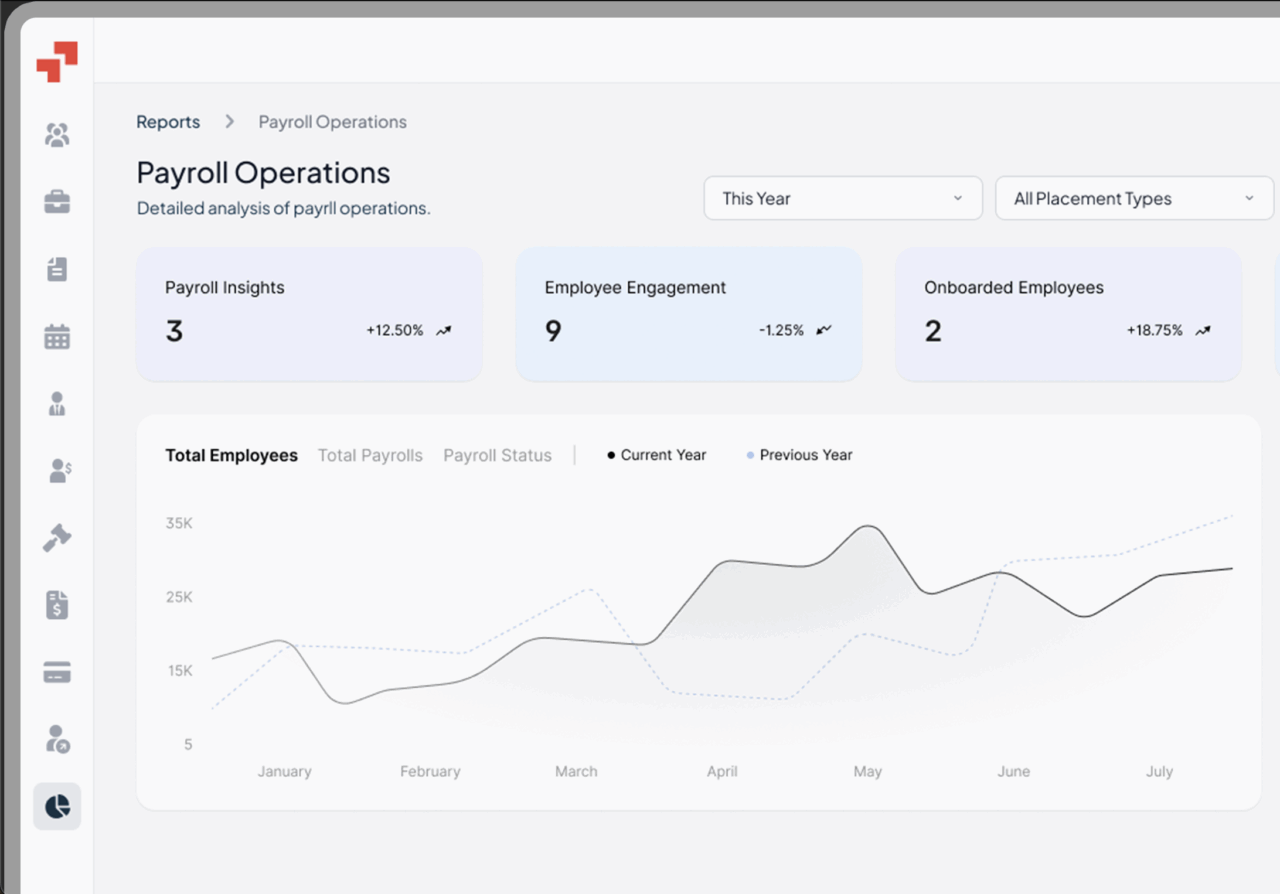Global Workforce GlossaryContingent Worker
Today’s businesses thrive on flexibility, scalability, and speed—and that’s exactly what contingent workers bring to the table. As companies navigate uncertain markets and evolving skill demands, this workforce model offers the agility to scale up or down without long-term commitments. For growing organizations, leveraging contingent workers is no longer just an option—it’s a strategic advantage.
Table of Contents
- What is a Contingent Worker?
- How are Contingent Workers Paid?
- What are the Different Types of Contingent Workers?
- What to Consider Before Hiring Contingent Workers
- Benefits of Hiring Contingent Workers
- How long can you keep a Contingent Worker?
- Can a Contingent Worker become Permanent?
- What are the Disadvantages of Contingent Work?
- Contingent Worker vs. Contract Employee: What’s the Difference?
- What is the Difference Between an Employee and a Contingent Worker?
- Contingent Worker Example
- How PamGro helps with Contingent Workforce and Global Expansion
What is a Contingent Worker?
A contingent worker is an individual engaged by a company on a non-permanent basis, often for a fixed project, assignment, or as-needed work, without classification as a full-time employee.
This model gives businesses flexibility to scale up or down their contingent workforce.
Contingent workers can include independent contractors, freelancers, consultants, temp workers, gig workers, and agency staff. They typically work under contract or agreement where the company defines deliverables or outcomes for a specific project , but not the full spectrum of employment-level oversight.
How are Contingent Workers Paid?
Contingent workers are usually paid on a project basis, hourly rate, or per deliverable.
Because they are not traditional employees, the responsibility lies with companies that generally do not withhold income tax or benefits; instead, contingent workers often handle their own tax obligations (such as self-employment tax) or are invoiced via agencies. When engaged via agencies, the agency may act as the payroll or administrative employer and pay the worker (often deducting fees) while the end client pays a “bill rate.”
In many jurisdictions, correct classification of payment terms, invoicing, and withholding (or lack thereof) is essential to avoid regulatory or tax exposure.
What are the Different Types of Contingent Workers?
Here are common types of contingent workers:
- Independent contractors / freelancers / consultants — self-employed persons who contract directly for specific tasks, often retaining autonomy over method and schedule.
- Temporary / agency workers — hired through staffing or temp agencies; the agency handles payroll and benefits, and the worker is assigned to client companies.
- Gig workers / on-call workers — available to take jobs as needed, often via platforms or marketplaces (e.g. gig economy).
- Contractor / Statement-of-Work (SOW) consultants — contracted for specific deliverables under a formal SOW agreement, with performance metrics and defined scope.
These types differ in control, risk, longevity, and administrative model.
What to Consider Before Hiring Contingent Workers
Before hiring contingent workers, consider these key factors:
- Legal classification risk: Misclassifying a worker (as independent vs. employee) can lead to back taxes, penalties, and legal exposure.
- Contract design & scope clarity: Clearly define the scope, deliverables, duration, intellectual property rights, confidentiality, and termination clauses.
- Tax & withholding obligations: Understand local tax laws and whether you need to withhold or report payments.
- Insurance & liability: Ensure proper liability, professional indemnity, or workers’ compensation insurance.
- Access to systems/data: Protect sensitive company data via access controls, NDAs, and least-privilege policies.
- Cultural & integration fit: Consider how the contingent worker will collaborate with permanent teams and whether alignment is needed.
- Performance management & monitoring: Put in place KPIs, feedback loops, and governance to ensure quality and accountability.
Evaluating these ensures smoother engagement, compliance, and value extraction.
Benefits of Hiring Contingent Workers
Using contingent workers offers several advantages, including more flexibility :
- Flexibility & scalability: You can scale your workforce up or down in response to demand fluctuations, without long-term commitments.
- Cost efficiency: You avoid fixed costs like benefits, paid leave, pension contributions, and permanent overhead.
- Access to specialized skills: Brings in niche expertise or knowledge not already present internally.
- Faster hiring & onboarding: Engaging contingent workers typically requires less recruitment and training time.
- Talent evaluation / bench testing: You get to “test drive” high-performing contractors before offering permanent roles.
Expanded Benefits
Beyond flexibility and cost control, contingent workers bring strategic advantages that are easy to overlook:
- Speed of market entry: When testing new regions or product lines, contingent workers allow you to hire locally without legal setup. For example, hiring a local sales consultant for a few months can validate demand before investing further.
- Innovation and fresh perspectives: External professionals often work across multiple industries and bring unique insights that may not surface internally. This can spark innovation in your processes, design, or customer engagement.
- Risk reduction in talent acquisition: Instead of hiring full-time employees who may not be the right fit, contingent workers allow you to test skills before committing.
- Workforce diversity: By tapping into freelancers, gig workers, and consultants globally, you gain exposure to new approaches, cultural insights, and customer perspectives.
- Improved workforce agility: In uncertain economic conditions, organizations can adjust contingent labor faster than adjusting headcount, creating resilience against market shifts.
These benefits make contingent workers not just a stopgap solution, but a strategic lever for business transformation.
How Long can you Keep a Contingent Worker?
There’s no universal maximum for non permanent workers , but you should be cautious about prolonged tenure.
If a contingent worker remains engaged for too long (e.g. many months or years on the same tasks), labor or tax authorities may reclassify them as employees, triggering liabilities.
In many jurisdictions, setting explicit contract durations and renewal limits helps maintain the worker’s status as contingent.
Using multiple projects or rotating assignments, and avoiding ongoing dependencies, supports compliance and reduces risk.
Can a Contingent Worker become Permanent?
Yes — contingent or contract workers can transition into permanent roles, often via a “try-before-you-buy” approach.
When a contingent worker repeatedly proves strong performance, cultural fit, and business value, you may offer them a full-time position.
This is a low-risk way to onboard talent, as you’ve already observed their output and collaboration.
However, if converting, you must formally onboard them under full employment terms (benefits, employment contract, payroll, compliance).
What are the Disadvantages of Contingent Work?
While useful, contingent work has drawbacks:
- Lower control over execution: Contractors may choose their methods or hours, reducing managerial oversight.
- Commitment & loyalty gaps: Contingent workers may feel less invested in your company’s mission or culture.
- Onboarding and alignment costs: Temporary workers may need training or ramp-up, which eats into productivity.
- Confidentiality & IP risk: External workers may inadvertently expose proprietary data—mitigate via NDAs and access restrictions.
- Turnover & continuity risk: They may exit mid-project or move to other clients, disrupting deliverables.
- Misclassification & legal exposure: If authorities reclassify contingent workers as employees, you may face penalties.
- Reduced cohesion / integration: Integrating contingent and permanent teams can be challenging in terms of alignment, culture, and communication.
Expanded Disadvantages
- Knowledge continuity: If contingent workers leave after short projects, knowledge may leave with them. Building documentation and pairing them with internal staff can mitigate this.
- Hidden costs: While headline costs may seem lower, expenses for agency markups, contract drafting, onboarding, and re-sourcing talent can accumulate.
- Complex compliance in global settings: Different countries have varied rules for what qualifies as independent contracting. For example, in some EU states, long-term contingent workers must be granted employee-like rights if their role resembles permanent staff.
- Team morale considerations: Permanent employees may perceive contingent workers as outsiders or worry about job security, impacting cohesion if not managed carefully.
Recognizing these challenges allows businesses to plan safeguards while still harnessing the power of contingent work.
Contingent Worker vs. Contract Employee: What’s the Difference?
Contingent worker is a broad umbrella term for non-permanent labor engagements (freelancers, gig workers, agency temps, etc.).
A contract employee is a subset under this umbrella — someone hired under a fixed-term employment contract (e.g. a 6-month contract) who may receive employment-like benefits or be partly managed as an employee.
In practice:
- A contract employee may have more oversight, benefits, and rights than pure independent contractors.
- Contingent workers could include non-employee models (freelancers) as well as agency-supplied temps.
- The core difference lies in control, legal status, benefits, and duration.
What is the Difference Between an Employee and a Contingent Worker?
At a high level, the difference lies in control, permanence, and protections:
- Control & direction: Employees are subject to employer direction on how/when work is done; contingent workers generally control their method of work and timing.
- Permanence & expectations: Employees expect ongoing work; contingent workers are engaged for specific tasks or durations.
- Benefits & protections: Employees receive statutory benefits (health, retirement, leave, job security, etc.) which contingent workers typically don’t.
- Tax & payroll treatment: Employers withhold payroll taxes and contributions for employees; contingent workers often pay their own taxes via invoices or self-employment mechanisms.
- Legal risk: Employees enjoy labor protections, while misclassifying contingent workers can create liability.
Thus, while both perform work, their legal, financial, and relational relationships differ substantially.
Contingent Worker Example
Imagine a growing SaaS startup headquartered in India wants to expand its product into Brazil. They hire a Brazilian UX researcher as a contingent worker for a 6-month contract to conduct user interviews, localize UI flows, and validate usability of the onboarding flow.
The UX researcher operates as an independent contractor: she invoices monthly based on agreed milestones, controls her working hours, and retains autonomy over how she executes tasks. The startup pays no local entity cost, handles no benefits, and avoids establishing a legal entity in Brazil for a short-term project.
During the contract, the startup can evaluate her performance, cultural fit, and outcomes. If she impresses, the startup may convert her to a full-time local hire—this conditional path allows risk-managed expansion without upfront overhead.
This example shows how a vendor management system for contingent worker model supports agile, compliant global scaling and later talent conversion.
How PamGro helps with Contingent Workforce and Global Expansion
Engaging contingent workers is powerful, but without the right guardrails, it can become a legal and administrative minefield. That’s where PamGro steps in.
- Global compliance expertise: We ensure that every contingent worker you engage — whether in Germany, the U.S., or APAC — is properly classified and onboarded in line with local employment laws.
- Entity-free hiring: Instead of setting up subsidiaries or branches, you can use PamGro’s infrastructure to quickly bring in contingent workers in over 100 countries.
- Payroll and payment flexibility: We handle local currencies, invoicing, tax withholdings (if applicable), and contractor payments, ensuring smooth transactions for both you and the worker.
- Transition to permanency: If a contingent worker proves indispensable, we simplify their conversion into a full-time employee with compliant contracts and benefits administration.
- Workforce visibility: Our platform offers centralized oversight of all contingent workers, making it easier to manage contracts, budgets, and project outcomes.
In a world where the gig economy and services providers are shaping the future of work, PamGro helps you hire fast, stay compliant, and expand globally without friction. If contingent workforce management is on your agenda, let’s talk — we’ll help you unlock the benefits while avoiding the pitfalls.
Hire the Best Talent, Anywhere






